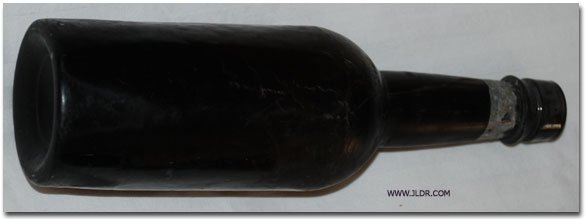|
|
|
|
|
|
| Outhouse Digging Bottle Samples | |||
 Hamlin's Wizard Oil bottle Photo taken by John L. Donated by Charles Cook |
|
 Detail of glass translucency Photo taken by John L. Donated by Charles Cook |
|
 Hamlin's Wizard Oil bottle neck details Photo taken by John L. Donated by Charles Cook |
|
 Another view of Hamlin's Wizard Oil bottle Photo taken by John L. Donated by Charles Cook |
|
 Aqua Beer Bottle Photo taken by John L. Donated by Charles Cook |
|
 Aqua Beer Bottle neck detail Photo taken by John L. Donated by Charles Cook |
|
 Aqua Beer Bottle detail Photo taken by John L. Donated by Charles Cook |
|
 Aqua Beer Bottle bottom detail Photo taken by John L. Donated by Charles Cook |
|
 Black Glass Beer Bottle Photo taken by John L. Donated by Charles Cook |
|
 Black Glass Beer Bottle neck details Photo taken by John L. Donated by Charles Cook |
|
 Black Glass Beer Bottle Photo taken by John L. Donated by Charles Cook |
|
 Black Glass Beer Bottle bottom details Photo taken by John L. Donated by Charles Cook |
|
|
Charles is my expert "witness" in Outhouse Digging and a frequent contributor. He sent me three bottles from some of the digs he has done. Here is what he has to say about the bottles... The black glass beer bottle was made in a three piece mold. The seams go around the bottle at the shoulder and on each side, up the neck. The bottom was like a cup, and the top of the mold opened. This type of mold was invented in England by a man named Rickets and patented in the 1820’s. Over the ensuing years, some of them were embossed with the word “PATENT” on the shoulder; the only place embossing could have been done on this type of mold. Three piece molds remained popular into the 1880’s and gradually went out of use. | |
|
Two of the bottles shown about, appropriately for the home brewer, are beer bottles. The so called black glass bottle dates from 1860 to 1870. You can still see some of the foil remaining around the closure. Charcoal and iron slag was added to the glass mixture to achieve the color, which is really very dark olive green. The second beer bottle is aqua, which means nothing was added to the glass to color or bleach it. It is from the 1880's. The latter is true of the smaller bottle, embossed with the name Wizard Oil, which was a liniment bottle. The opalescence on the aqua bottles is caused from being buried so long in the ground. The black glass bottle would have been typical during the Civil War era. | |
|
The embossing can be seen on the bottom of the aqua beer bottle. BG Co is a mark used by the Belleville Glass Company of Alton, Illinois around 1882.
These bottles aren’t too valuable by today's standards but we feel they are "priceless" samples of the history of the United States. Charles has had many emails as a result of our outhouse site over the approximately ten years we have featured knowledge and bottle pictures from Outhouse Digs on our web site. Charles never created a web site of his own because of his exposure on the Outhouses of America Tour web site. Even though the link to Charles has become rather buried and since the comments have become so voluminous, people are still finding him. He even purchased some new Orleans dug bottles from one responder, and he expects to again. Very recently, he has corresponded with a scuba diver who lives in the Barbados. The diver is running out of bottles in less than 200 feet and wants to try digging privies around the big sugar plantation houses...very interesting. | |
| What else can you see in the images shown? Many times a photo is worth a thousand words and I've only elaborated with a few so why don't you add some "color commentary" to my collection. If your addition is worthy, you will find the quote added on the Comments to the Curator
page. | |
 "Dump" mail to the official Outhouse Curator here...jlo...@jldr.com Have you seen all the Outhouses yet? Return to my home page Return to the Top RECOMMEND THIS SITE TO A FRIEND! Copyright © 2008 |